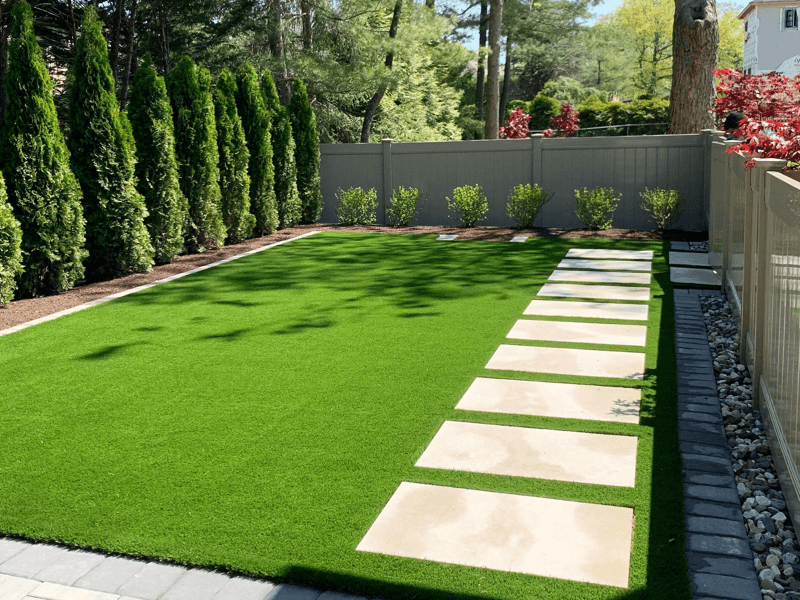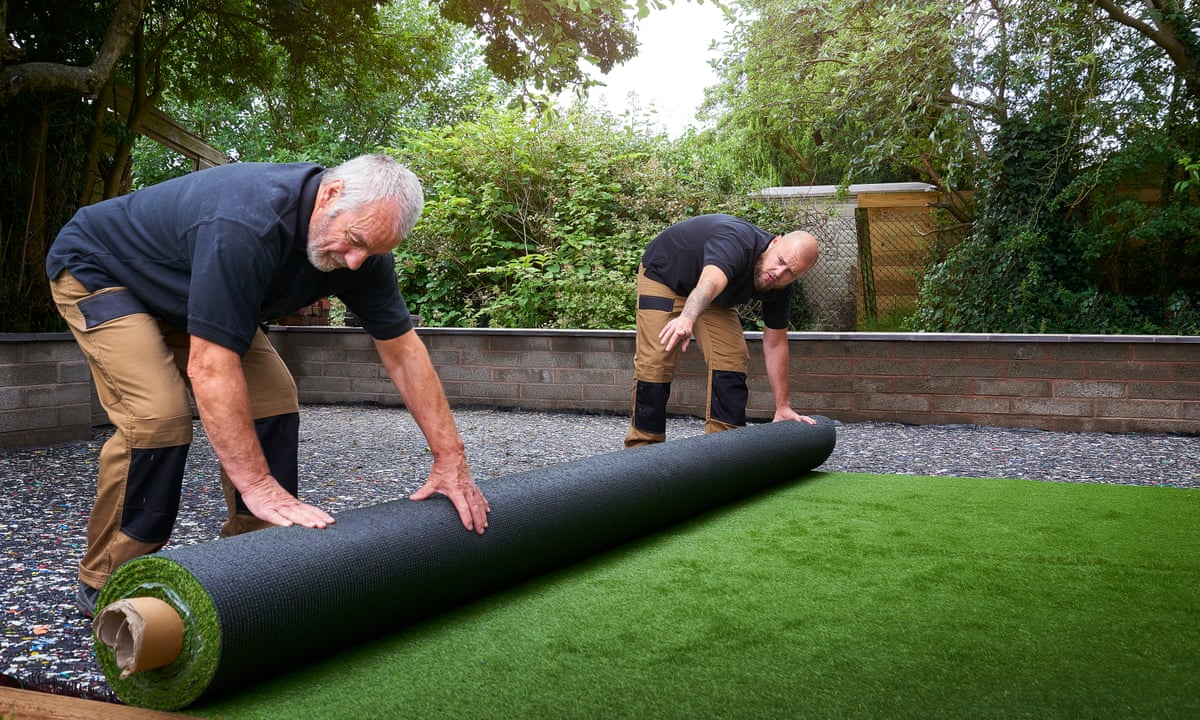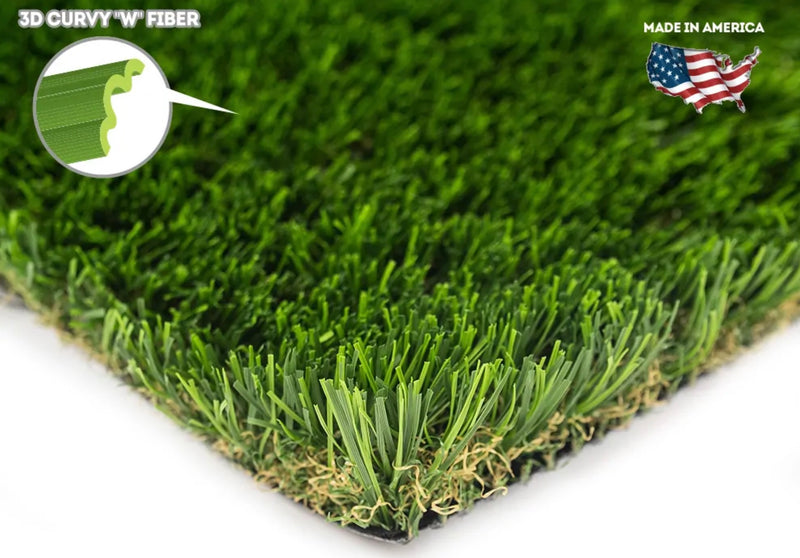Top Arizona Turf Providers Delivering a Lifelike Lawn Alternative
Top Arizona Turf Providers Delivering a Lifelike Lawn Alternative
Blog Article
Look Into the Environmental Benefits of Opting for Artificial Lawn Solutions
The fostering of synthetic grass services offers an engaging chance to address pushing environmental challenges. By substantially minimizing water usage and decreasing the application of harmful chemicals, these choices not just advertise sustainable landscape design but additionally safeguard regional environments. The lower carbon footprint associated with decreased maintenance activities contributes to an extra lasting strategy to land management. The ramifications of these advantages prolong beyond simple conservation efforts, raising concerns about their lasting impact on environment preservation and overall ecological balance. Discovering these dimensions discloses a complicated interaction worth thinking about.
Water Preservation Benefits
One of the most considerable advantages of synthetic grass is its capacity to conserve water. Typical lawn yards require substantial irrigation, especially in locations prone to dry spell or water limitations. On the other hand, artificial turf does not need watering, dramatically decreasing the overall need for water resources. This function is especially advantageous in deserts where water deficiency is a pushing concern.
By eliminating the requirement for normal watering, synthetic grass contributes to lasting landscape techniques and helps minimize the ecological influence of extreme water intake. Additionally, the preservation of water reaches the decrease of runoff, which can lead to soil erosion and waterway air pollution.
Furthermore, the setup of artificial lawn enables home owners and districts to designate water sources much more successfully, concentrating on crucial usages such as alcohol consumption water and agriculture. The change in the direction of synthetic grass not just promotes accountable water usage but likewise lines up with wider ecological objectives targeted at preserving natural deposits.
As areas significantly focus on sustainability, the water conservation benefits of synthetic grass provide an engaging situation for its adoption in residential and industrial landscaping tasks.
Lowered Chemical Use
The shift to artificial lawn substantially reduces the dependence on chemical treatments frequently made use of in all-natural turf upkeep. Traditional lawn administration generally involves the application of fertilizers, herbicides, and pesticides to advertise development and control insects. These chemicals can position threats to human health, neighborhood wildlife, and the environment, adding to dirt and water contamination.
In comparison, synthetic grass gets rid of the requirement for these hazardous compounds. As soon as mounted, it calls for minimal upkeep, primarily including routine cleansing and irregular infill replenishment. This reduction in chemical use not only benefits the prompt setting yet likewise adds to broader environmental security. By lessening the release of artificial compounds into the ecological community, man-made grass promotes much healthier dirt and water supply.
Moreover, the lack of chemical overflow connected with synthetic grass installments aids safeguard neighborhood rivers from contamination, sustaining marine life and keeping biodiversity. Turf installation phoenix az. As areas significantly focus on lasting techniques, choosing fabricated turf presents a practical solution that straightens with environmental conservation objectives. With this shift, residential or commercial property proprietors can take pleasure in lush environment-friendly areas without jeopardizing eco-friendly health, leading the way for a much more lasting future
Lower Carbon Impact

Additionally, the installation of synthetic grass can cause significant water conservation. All-natural grass require significant amounts of water for watering, which not only includes to the carbon footprint related to water extraction and treatment yet additionally stress neighborhood water resources. On the other hand, synthetic grass needs marginal maintenance, needing no watering, thus significantly minimizing water use and its connected energy costs.
Furthermore, the long life of fabricated lawn adds to its decreased carbon effect. With a life-span of up to 15 years or more, the requirement for regular substitutes is decreased, resulting in less waste and reduced energy intake in manufacturing and disposing of traditional yard alternatives. On the whole, synthetic turf offers a lasting alternative for environmentally mindful landscaping.
Habitat Preservation
Environment conservation is a critical factor to consider in the discussion over landscaping options, particularly when comparing synthetic grass to natural turf. Natural yard lawns usually call for considerable upkeep, consisting of making use of herbicides, fertilizers, and chemicals, which can detrimentally affect local communities. These chemicals can leach right into the soil and rivers, harming native vegetation and fauna see this site and disrupting neighborhood environments.
In contrast, synthetic grass provides an opportunity to minimize the environmental impact of landscape design. By choosing artificial turf, homeowners can minimize the disturbance of natural environments connected with conventional lawn treatment techniques. Synthetic grass removes the requirement for unsafe chemicals, thereby safeguarding nearby wild animals and maintaining the stability of surrounding ecosystems. The setup of man-made lawn can lead to the conversion of former lawn locations right into even more biodiverse landscapes, such as pollinator yards or indigenous plant areas, which can support local wild animals.
Eventually, the shift to synthetic grass not only conserves water and decreases maintenance efforts however additionally cultivates an extra unified connection in between human tasks and the native environment, promoting habitat preservation in the procedure.
Long-Term Sustainability
Long-lasting sustainability is a crucial consider reviewing the advantages of synthetic grass over typical turf yards. Among the most significant advantages of synthetic grass is its toughness; it can last as much as 15-20 years with minimal maintenance, whereas natural grass needs frequent reseeding and substitute. This longevity reduces the demand for constant sources, such as water, plant foods, and chemicals, which are important for maintaining a healthy grass lawn.
In addition, synthetic grass adds to a decrease in carbon discharges associated with yard care equipment. Traditional yards frequently call for gas-powered mowers, leaners, and blowers, every one of which contribute to air contamination. Artificial turf companies phoenix. On the other hand, synthetic grass eliminates the need for such devices, advertising a cleaner setting
Additionally, the production of synthetic This Site grass significantly uses recycled materials, enhancing its sustainability profile. As manufacturers take on environment-friendly practices, the environmental impact of fabricated grass remains to diminish.

Final Thought
The fostering of fabricated turf services offers substantial environmental advantages, consisting of substantial water conservation, lowered reliance on unsafe chemicals, and a lower carbon footprint. Artificial turf help in maintaining natural habitats by reducing land disturbance and promoting lasting sustainability with the use of durable materials. Collectively, these aspects highlight the potential of synthetic turf to add positively to environmental wellness and supply a sensible choice to typical landscape design methods in a progressively resource-conscious globe.
In contrast, fabricated grass does not need watering, significantly minimizing the total demand for water sources. By lessening the release of synthetic compounds right into the community, artificial lawn advertises healthier soil and water systems.
Furthermore, the setup of fabricated turf can result in considerable water conservation. In comparison, artificial turf requires minimal upkeep, requiring no watering, consequently considerably reducing water usage and its go to this site linked energy costs.

Report this page